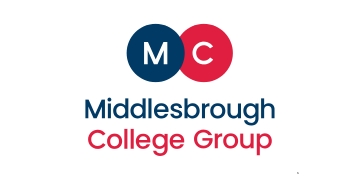The notion of ‘stuck’ schools is at the top of the political agenda. But having spent pretty much my entire professional life working with schools who would likely be regarded as stuck, I find the current narrative problematic.
This includes both the supposed causes of why such schools struggle, and the notions of the leaders they require.
What’s more, whilst politicians, academics and system leaders are quick to diagnose the characteristics of stuck schools – they are less keen to outline the tensions in the system that actively contribute to their creation.
So, what has the system got wrong?
The wrong diagnosis
The first challenge is that the acquisition of knowledge, as demonstrated by higher qualifications such as degrees, remains the sole marker of success.
Worse, this success is usually framed as the result of virtuous self-improvement and therefore thoroughly deserved when, in fact, the picture is much more complex.
For example, children of graduates are 20 times more likely to achieve a higher degree than those from non-graduate families.
Consequently, it is not unusual that in our most deprived and challenged communities, many struggle to buy into a vision of education that appears alien to them, especially when they are characterised as feckless or undeserving.
Secondly, it’s unsurprising that many ‘stuck’ schools are located on the peripheries; in coastal or post-industrial towns and therefore isolated from not just educational but wider employment and social opportunities.
Unsurprisingly, these schools have higher incidents of poverty and more children who are identified with special educational needs.
Finally, those schools that are at the greatest risk of being stuck are usually the least popular with parents. That means they are hard-pressed financially and likely to be in receipt of casual admissions of pupils from families who need extensive support.
The wrong medicine
Too often the medicine applied to these schools is the imposition of the transformational leader, or their more recently nationally accredited version, the ‘system leader’.
These heroic individuals set about the school with a tested formula that frequently includes removing long serving leaders; setting challenging targets for the end of key stages; and upgrading the behaviour policy to be ‘zero tolerant’.
Sure enough over time, the new leadership transforms the school.
But, more often than not, this is by changing the intake so that the ‘stuck school’ no longer serves its core community, especially if the local families are not deemed aspirational enough.
Whilst London Challenge was very successful, it is hard to find examples of turnarounds where there is no evidence of significant pupil mobility and/or admissions management.
There is another way
In my new book on stuck schools, I suggest there is another way. Whilst stuck schools need support and help to enhance their leadership capacity, there are a wide range of factors that need addressing to bring about sustainable change.
First, leaders must be able to clarify the complexity that exists in their stuck schools to address the root causes of long-term failures.
Secondly, leaders should create a culture that welcomes challenge and accountability, that is clear-eyed and ambitious – but driven by governance rather than a fear of the regulator.
Thirdly, leadership must be unleashed. Not just creating capacity to support senior leaders, but also subject leaders and teachers all the way through to education support staff.
Staff who choose to work in our most challenging schools are not lazy or unproductive, but simply overwhelmed by the scale of daily challenges they face.
Therefore leaders must embrace the workforce they have and focus on making everyone better every day, making do and mending their staff body.
Too often leaders in stuck schools blame parents, poverty of opportunity or the system for why schools cannot improve. Whereas those leaders who capture their community find that far from being a barrier, the community becomes a significant asset and persistent problems such as attendance are more easily overcome.
The government’s recent guidance on parental engagement is an excellent starting point.
The competition challenge
However, unless schools across a town or an area collaborate and work together to meet the needs of those pupils who face the strongest headwinds, the twin forces of competition and parental choice create at least one school where the scale of the challenges become unmanageable.
Collaboration creates the opportunity to co-construct the most appropriate provision for those pupils who are struggling to be in school, rather than assume that these pupils are someone else’s problem.
Hopefully, the role of RISE advisors will be focused on co-designing the most appropriate support for their target schools, although we are still in the early days of this policy.
But perhaps the biggest tension for stuck schools is the way we measure success, based on a curriculum model that fails to meet the needs of the ‘forgotten third’.
Take risks
Brave leaders take risks in stuck schools to adapt the curriculum to best meet the needs of the pupils they serve, but too often stuck schools are exhorted to rigidly apply the curriculum without acknowledging context.
In addition, there is an unresolved tension between the current administration’s drive to make schools more inclusive and rigidly sticking to the previous administration’s standards agenda.
The current over-focus on key stage 4 is unhelpful and what is far more important for pupils and families is actually accessing high quality level 3 provision that leads to meaningful employment, further education and training that is not exclusively focused on university.
The recent post-16 white paper is especially encouraging and should the proposals come to pass, would provide a welcome boon for schools that are at risk of being stuck.
For some pupils with additional barriers; access to a level 3 qualification by 19 will mean that they can gain employment, live independently and contribute to society.
The recent policy announcements, including at the Labour conference, are definitely encouraging, though it remains to be seen whether the funding to support the proposed alternatives to A-level is in place to achieve these laudable goals.
Making stuck schools unstuck
Throughout my career, and increasingly of late, I hear that the problem of stuck schools is that they are just too complex, and that they are just part and parcel of our educational system. This is plain wrong.
Leaders of stuck schools with the right framework and support can provide the communities they serve with a great education. But to gain and sustain success, leaders need to be brave and take risks.
They need to make curriculum choices that benefit their pupils, focus on inclusion and ensure access to further qualifications that lead to meaningful employment.
Ultimately, the best test for these schools is whether they truly make a difference to the communities they serve over generations, rather than with one set of results or an individual inspection report.








Your thoughts